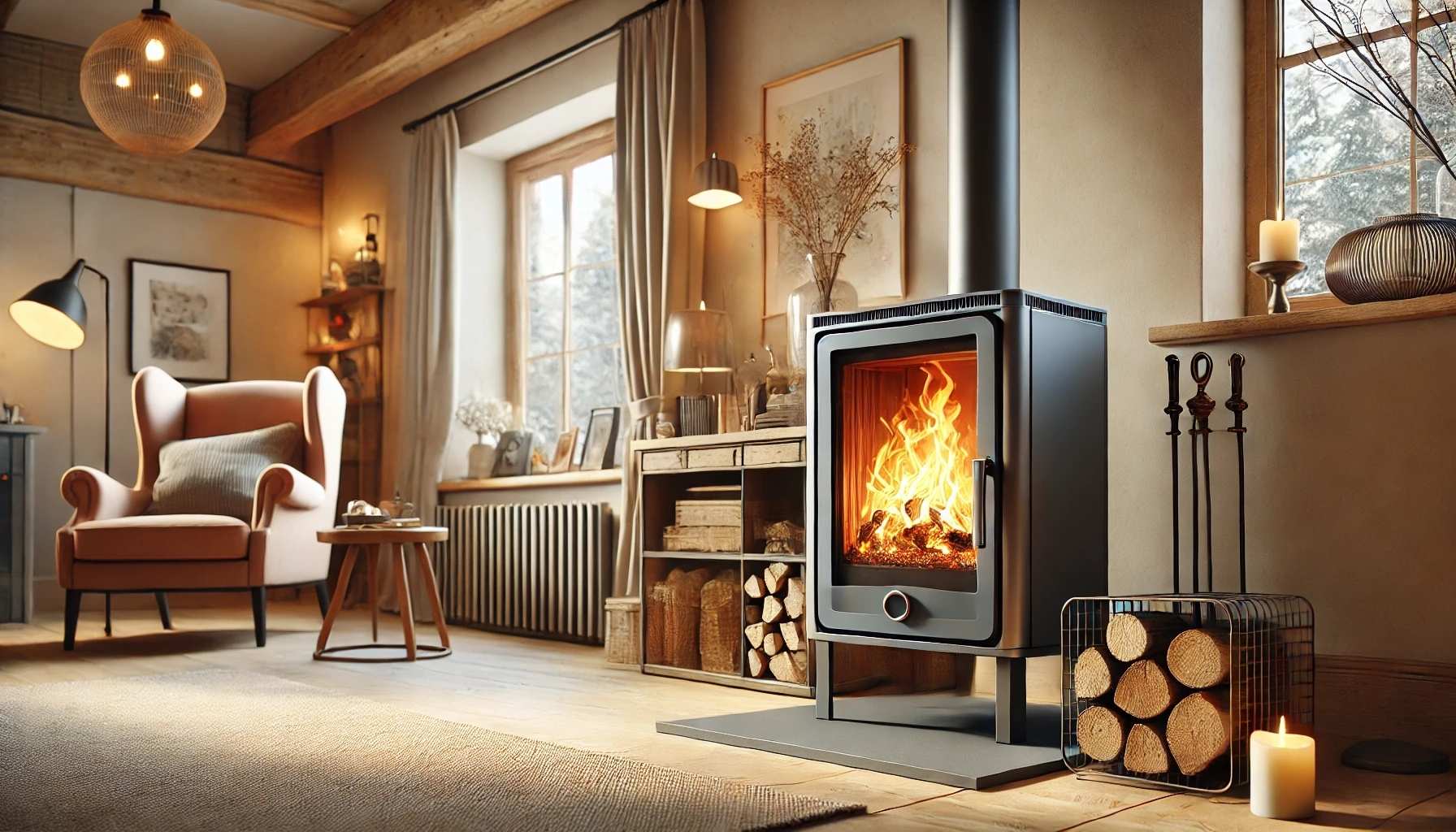
Can You Take a Log Burner When You Move? Here's What You Need to Know
Thinking of taking your cosy log burner with you when you move? Good news – you can! But before you start unscrewing anything, there are some important things to consider. From legalities to costs, and even what log burner to buy for your new place, keep reading to avoid a fiery mess!
Log Burners as Fixtures vs. Chattels
So, you’ve fallen in love with your log burner and you’re hoping to bring it along to your new home. But before you start making plans, you need to understand whether it’s a fixture or a chattel – it’s the deciding factor in whether it comes with you or stays behind.
Understanding the Legal Distinction
Here’s the deal: Fixtures are part of the property, like a fitted kitchen or a built-in wardrobe. They stay behind when you sell. Chattels, however, are personal property that can be moved – like furniture or a free-standing cooker. If your log burner is a fixture, it’s likely considered part of the house and legally stays with the property. If it’s a chattel, you’re good to take it with you.
Factors Determining Fixture Status (Permanence of Installation)
The big question is: how is your stove installed? If it’s fixed into the chimney and requires a bit of effort to remove, it’s probably a fixture. But if it’s a more mobile unit, perhaps not even plumbed into the flue, it’s more likely a chattel. It all comes down to the permanency of the installation.
In other words, if your stove is glued to the house like the perfect pair of slippers, it’s probably going to stay behind. If it’s something you could take out without much hassle, then it’s yours to take!
The Importance of Communication with Buyers/Sellers
Whether you’re buying or selling, communication is key. If you're the seller, you need to make it clear whether your log burner is coming with you or staying put. If you're the buyer, don’t assume the stove is included – ask!
Clearly Stating Intentions in the Sales Agreement
Imagine this: You’re all set to buy your dream home, and you can already picture yourself curled up by the log burner on chilly nights. Then, suddenly, you find out that it’s not included in the sale. Awkward, right?
This is why it's crucial to be clear. If you want to take the stove with you, make sure it's explicitly stated in the sales agreement. Use the fixtures and fittings form (TA10) and make sure your estate agent knows. The last thing you want is to have to deal with an upset buyer or a last-minute legal complication. Be upfront about it – it’s the best way to avoid any confusion.
Practical Considerations for Removal
Now that you’re clear on the legal side, let’s talk about the practicalities of removing your log burner. Spoiler alert: it’s not as easy as just pulling it out and carrying it off to your new home. There are a few things to consider before you start unscrewing that flue pipe.
Disconnecting and Safely Removing the Burner
First things first – safety. Before you even think about moving your stove, make sure it’s cool. Leave it for at least 24 hours to avoid burning yourself. Then, you’ll need to disconnect the flue pipe carefully. It’s not just about lifting the stove out; it’s about doing it properly without damaging anything.
This is a job best left to the professionals, especially if you want to stay within the bounds of UK safety regulations. A HETAS-certified installer is your best friend here. They know the ins and outs of the process and can ensure that everything is up to standard.
Potential Damage to Walls, Hearth, and Flue
Removing a log burner is not without its risks. If your stove is built into the hearth or connected to a custom-made flue, taking it out could cause some damage to your walls or the flue itself. If you remove these elements, you might also need to repair them – and those repairs might not be cheap.
The hearth, for example, is often a part of the floor, and once it’s removed, the space may not be usable without significant repairs. Plus, the flue system might be sealed into the ceiling or walls, making it tricky to remove without causing issues.
Re-installation Costs in the New Property
Think moving your stove is a simple task? Think again. Reinstalling a log burner in a new home can be pricey. Depending on the layout of your new place, you might need a new flue system, a fresh hearth, or even a whole new installation kit.
Costs vary, but on average, you’re looking at anywhere between £500 and £2,000+ for the complete package. This includes removal, transport, cleaning, reinstallation, and any new equipment you need. So, before you get too excited about the idea of taking your log burner, make sure you’re prepared for the potential cost.
Alternatives to Taking the Log Burner
If the thought of all the costs and hassle is making you reconsider, don’t worry. There are other options to think about that might save you time, money, and stress.
One option is to leave the stove behind – it could even add value to your home sale. A modern, DEFRA-approved log burner might just be the cherry on top for some buyers, and they may be happy to pay a little extra for it. Plus, if it’s an older stove, you might want to think about replacing it with a more efficient model in your new home.
Another option is to sell it. If your stove is in good condition and it’s something you’re willing to part with, you could sell it separately. This way, you could get some of the money back and use it towards a new, potentially more efficient model for your next home.
In the end, whether you take your log burner with you or leave it behind depends on a few factors. The legal status of the stove, the cost of removal and reinstallation, and what the buyer expects all come into play. If you love your stove and it’s worth the effort and expense, then go ahead and move it. But if you’re feeling uncertain or the costs are too high, leaving it behind might be the simpler option.
Either way, it’s important to think ahead and make sure everything is communicated clearly. A little planning now will save you a lot of hassle later. And who knows – you might just end up with a better log burner in your new home!
Other content we think you'll love
- What Log Burner Do I Need? The Cosy Homeowner’s Guide
- What Log Burner to Buy: The Cosy Homeowner's Guide
- How to Remove a Wood Stove: A Step-by-Step Guide
- How to Fit a Log Burner (Without Setting Off the Smoke Alarm)
- What Size Log Burner Do I Need? A Simple Guide to Finding the Perfect Fit
- Where to Put a Log Burner: Finding the Perfect Spot for Warmth and Style
- How to Fit a Wood Burner in a Conservatory
- Log Burner for New Build: What You Need to Know Before You Install One
- Installing a Log Burner Near a Gas Pipe: What You Need to Know
- Log Burner Near Curtains: How Close Is Too Close – And How to Stay Safe
- Can You Use a Log Burner Without a Liner?
- Can You Have a Log Burner with Underfloor Heating?
- Log Burner Distance from Combustibles: Stay Safe and Warm

